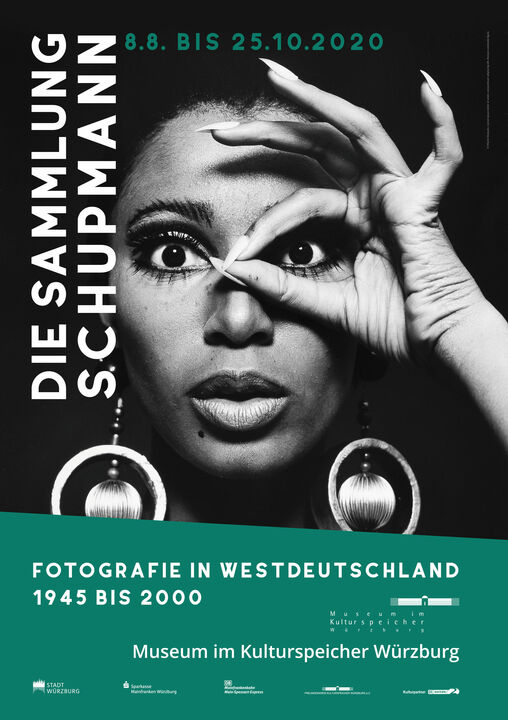
Photography in West-Germany 1945–2000
August 8 – October 2020
Museum im Kulturspeicher, Würzburg, Germany
Participating artists: Thomas Anschütz, Dieter Appelt, Thomas Bachler, Bernd und Hilla Becher, Kilian Breier, Georg Eurich, Claudia Fährenkemper, Hubs Flöter, Hermann Försterling, Peter Fürst, Franziska von Gagern, Verena von Gagern, André Gelpke, F. C. Gundlach, Heinz Hajek-Halke, Ruth Hallensleben, Robert Häusser, Heinrich Heidersberger, Karl Martin Holzhäuser, Walde Huth, Gottfried Jäger, Arno Jansen, Peter Keetman, Thomas Kellner, Jaschi Klein, Barbara Klemm, Walter Lautenbacher, Siegfried Lauterwasser, Adolf Lazi, Charlotte March, Will McBride, Willi Moegle, Stefan Moses, Andreas Müller-Pohle, Peter Neusser, Floris M. Neusüss, Detlef Orlopp, Hilmar Pabel, Rico Puhlmann, Regina Relang, Heinrich Riebesehl, Toni Schneiders, Wilhelm Schürmann, Otto Steinert, Wolf Strache, Walter Vogel, Horst Wackerbarth, Ludwig Windstosser.
Museum im Kulturspeicher
Oskar-Laredo-Platz 1
97080 Würzburg
Germany
+49 931 322250
www.kulturspeicher.de
“Thomas Kellner’s architectural interventions pointedly assert that things can change at any time it takes an eye to blink or a camera’s shutter to click.” Coleman, A.D., Ozymandias, Coppock, Christopher, 2003, Ffotogallery, Cardiff, Wales, page 2
The physician Michael Schupmann has compiled around 700 black and white photographs into an exquisite collection: starting with the members of the "fotoform" group, who drew attention to themselves after the Second World War through unusual perspectives and dark chamber experiments, through the reportage photography by Barbara Klemm or from Will McBride to the work of digital pioneer Andreas Müller-Pohle. Schupmann did not build up this collection with museum requirements. His view as an amateur photographer and photography lover since his studies in Tübingen in the 1970s was and remains a personal one; this is also evident from the fact that he sought personal contact with almost all of the photographers in his collection; he was always interested in the stories behind the pictures.
For example, since the start of his collecting work at the end of the 1980s, Schupmann has managed to compile photographs of many important German authors and all significant artistic trends in West Germany after 1945 (and essentially until 2000): "subjective" and staged photography, works of visualism from the 1980s and 90s, touching reportage photographs and sober documentary shots as well as important works of fashion and object photography are represented. Concrete and generative photographs form a link to the holdings of the Ruppert Collection in the Museum im Kulturspeicher. The concentrated power of the Schupmann Collection is also based on the fact that it focuses on analog black and white photography and excludes newer developments - such as the large color formats of the Düsseldorf Becher School and, to a large extent, digital photography.
The collection can therefore certainly be called historical. With a selection of around 200 fascinating individual images, the exhibition allows for a foray into the history of black and white photography in West Germany after the Second World War. Despite all the differences, the recordings have one thing in common: their high artistic quality; this is precisely the reason why they open up a new view of the world full of surprising perspectives and deep insights.
The exhibition can then be seen in the State Museum for Art and Cultural History in Oldenburg and in the Bad Arolsen Museum.
A catalog for the exhibition will be published by Michael Imhof Verlag.
Thank you to Michael Schupmann and his wife for including my work in such a significant collection. And thank you to the museum in Wuerzburg for giving his collection such a spot-light








